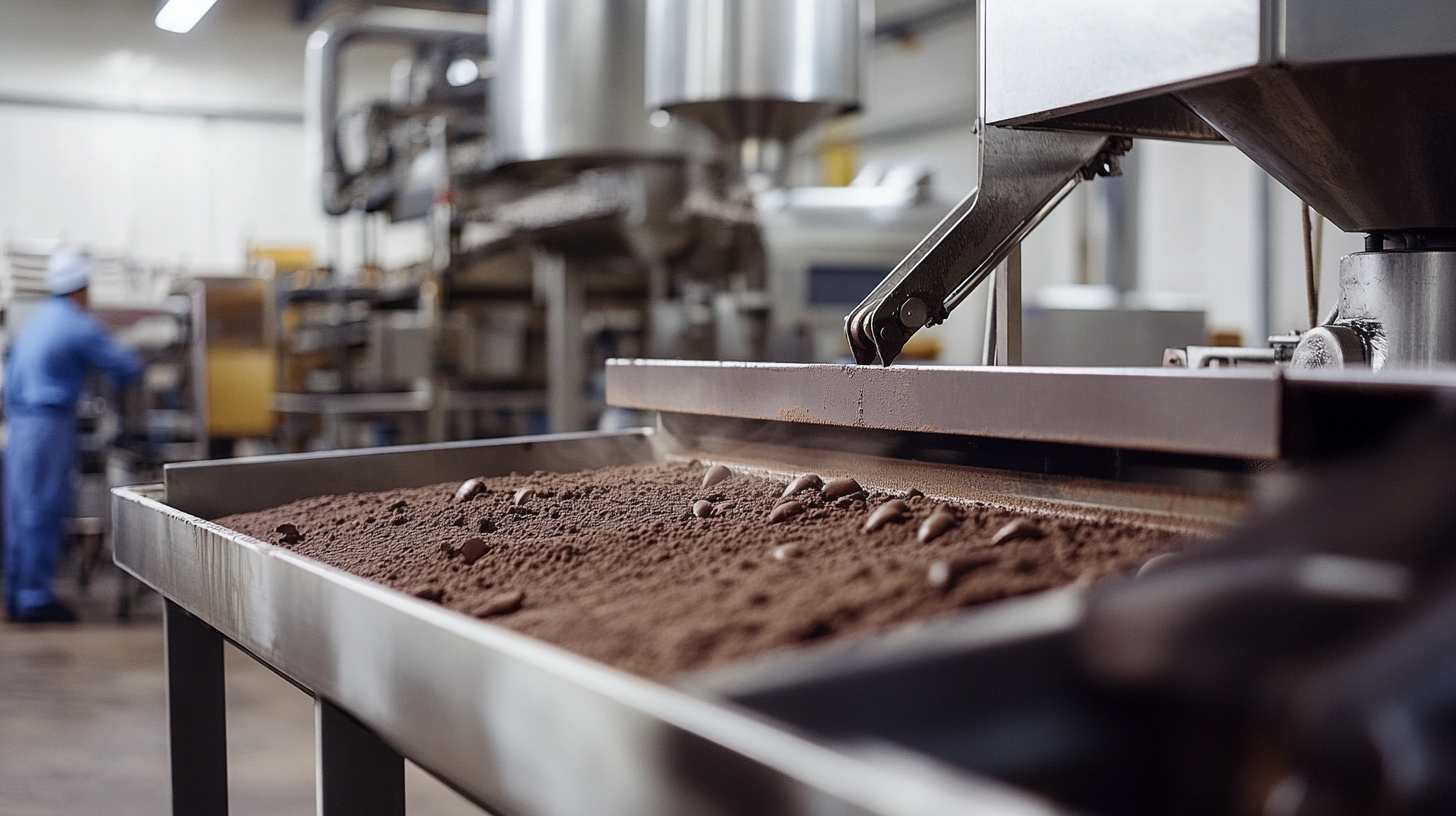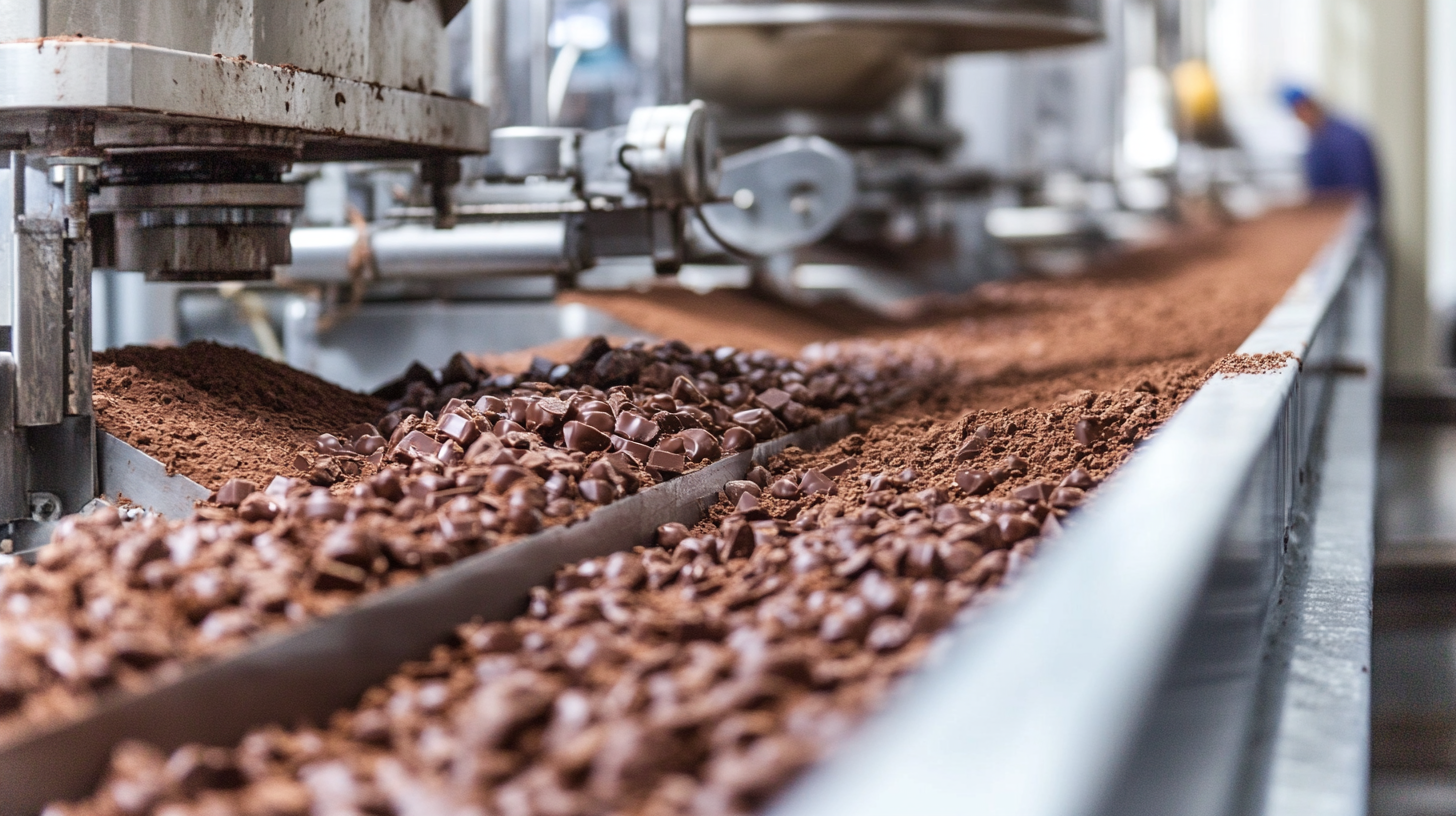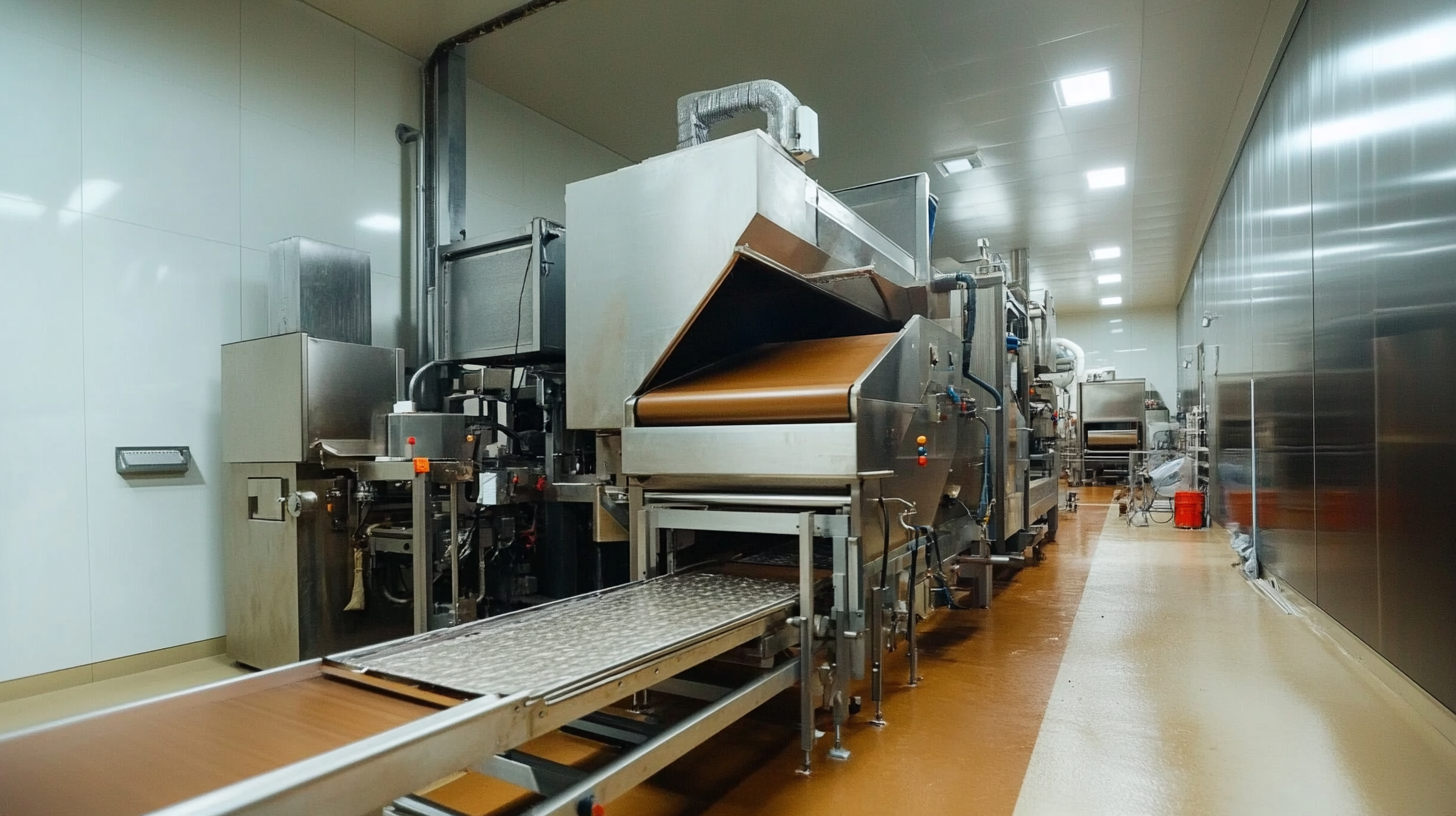The global chocolate market has witnessed exponential growth, driven by an increasing demand for high-quality products and innovative flavors. According to a report by Grand View Research, the chocolate market is expected to reach USD 211.4 billion by 2025, growing at a CAGR of 4.6%. This surge presents a significant opportunity for businesses in the confectionery sector to enhance production capabilities. Investing in advanced macchinari produzione cioccolato is essential for manufacturers aiming to capitalize on this lucrative market.
In addition to addressing the growing consumer demands, modern chocolate production machinery increases efficiency, reduces operational costs, and ensures consistent product quality. The International Cocoa Organization highlights that efficient production systems can improve yield rates and reduce waste, critical factors in maintaining profitability within this competitive landscape. As businesses seek to innovate and expand their product lines, the integration of state-of-the-art macchinari produzione cioccolato becomes a strategic move towards achieving long-term sustainability and market leadership in the chocolate industry.

As the demand for gourmet and artisan chocolate continues to soar, investing in chocolate production machinery has never been more strategically advantageous. With the global artisan chocolate market projected to reach approximately USD 21.9 billion by 2034, up from USD 6.8 billion in 2024, the growth rate stands at an impressive CAGR of 12.4%. This rapid expansion underscores the increasing consumer preference for high-quality, handcrafted chocolates that offer unique flavors and premium experiences. The surge in artisan chocolate demand is not merely a trend; it reflects a significant shift in consumer behavior towards artisanal and locally-sourced products. As people become more health-conscious and discerning about their food choices, they are willing to invest in chocolates that are crafted with superior ingredients and ethical sourcing practices. This shift presents a lucrative opportunity for businesses willing to enhance their production capabilities. By investing in advanced chocolate production machinery, companies can efficiently scale their operations to meet the growing demand while maintaining the quality and craftsmanship that artisan chocolate consumers expect. Moreover, the overall global cocoa and chocolate market is anticipated to reach USD 10.86 billion by 2033, with a robust CAGR of 6.24%. This indicates a healthy landscape for chocolate producers and suggests a broader market potential for both artisan and mass-market chocolates. Businesses that focus on innovation and machinery upgrades will not only improve their production efficiency but will also cater to the evolving tastes of chocolate lovers worldwide. Embracing technological advancements in chocolate manufacturing is essential for businesses aiming to thrive in this flourishing market.

Investing in advanced chocolate production machinery is not just a trend; it's a necessity for businesses aiming to enhance production efficiency. According to a report by Grand View Research, the global chocolate market size was valued at approximately $131 billion in 2021 and is expected to expand at a compound annual growth rate (CAGR) of 4.5% from 2022 to 2030. As demand continues to grow, optimizing production processes with state-of-the-art machinery becomes crucial to meet consumer expectations while maintaining profitability.
Advanced chocolate machinery offers several advantages that directly impact production efficiency. For instance, modern tempering machines ensure uniform texture and quality, minimizing waste and reprocessing time. A study by Research And Markets indicates that companies investing in automated systems can increase output capacity by up to 30%. This not only helps in maximizing productivity but also reduces labor costs, allowing businesses to allocate resources more strategically and focus on innovation and marketing.
Furthermore, the integration of technology such as IoT in chocolate production machinery enables real-time monitoring and predictive maintenance, resulting in increased uptime and reduced downtime. A report by Allied Market Research highlights that the smart manufacturing sector, which includes automated chocolate production, is projected to reach $400 billion by 2025. This shift toward digitization and automation positions businesses to streamline operations and enhance their competitive edge in an evolving market.

In the world of chocolate production, maintaining high standards of quality is paramount. Modern equipment plays a crucial role in achieving this goal, offering precision and efficiency that traditional methods simply cannot match. The integration of advanced technology into chocolate manufacturing processes helps ensure that each batch meets the expected flavor profiles, textures, and aesthetic qualities. This level of control is vital for businesses eager to stand out in a competitive market.
One of the significant benefits of investing in chocolate production machinery is the ability to monitor and adjust parameters in real-time. For instance, temperature control is critical during the melting and conching stages. Modern machines are equipped with sensors that provide constant feedback, allowing for immediate adjustments to prevent issues such as burning or improper mixing of ingredients. This not only enhances the overall quality of the chocolate but also minimizes waste, saving businesses both time and resources.
Moreover, automation in chocolate production machinery reduces the risk of human error. With sophisticated systems in place, manufacturers can produce consistent products that adhere to strict quality standards. As consumers become more discerning, they demand superior products; the ability to deliver on these expectations is vital for brand reputation. By investing in high-quality machinery, chocolate businesses can ensure they not only meet but exceed customer expectations, fostering loyalty and profitability in the long run.

Investing in chocolate production machinery can significantly reduce labor costs, transforming how businesses operate in the confectionery industry. According to a report by Grand View Research, the global chocolate market is expected to reach USD 211.96 billion by 2025, driven by rising consumer demand. To keep pace with this growth, automating production processes becomes essential. Automated machinery not only minimizes the reliance on manual labor but also streamlines operations, allowing businesses to allocate resources more efficiently.
In a recent study published by the International Society of Chocolate Studies, companies that adopted automated chocolate production reported a labor cost reduction of approximately 30%. This shift not only enhances productivity but also enables manufacturers to respond quickly to market demands without the extensive hiring and training period traditionally associated with scaling production efforts. The integration of advanced machinery, such as tempering machines and enrobing lines, allows for higher consistency in product quality, further justifying the initial investment.
Moreover, the return on investment (ROI) in chocolate production machinery can be realized within a few years, as indicated by the Food and Beverage Industry Report. By optimizing production flow and reducing the need for extensive labor, businesses can improve their profit margins. In a competitive market where consumer preferences evolve rapidly, investing in technology to reduce labor costs positions companies to tackle challenges head-on and capitalize on opportunities for growth.
The chocolate production industry is witnessing a significant transformation driven by technological advancements. According to a recent report by ResearchAndMarkets, the global chocolate market is projected to reach $161.56 billion by 2024, growing at a compound annual growth rate (CAGR) of 4.6%. This growth is influencing production methodologies, emphasizing the need for innovative chocolate production machinery.
Emerging technologies in chocolate production, such as automated tempering and smart mixing systems, are enhancing efficiency and product consistency. A survey by Deloitte revealed that 70% of chocolate manufacturers believe that investing in advanced machinery could significantly reduce production time and costs. Furthermore, Industry 4.0 technologies, including IoT integration, are allowing for real-time monitoring of production processes, leading to optimized supply chain management and reduced waste.
As consumer preferences evolve towards premium and artisanal chocolates, businesses must adapt to these trends by investing in machinery capable of producing high-quality products. Analysts estimate that the demand for premium chocolates will drive a 10% increase in investments in production technology over the next five years. This shift not only addresses market demands but also positions businesses to leverage automation for scalability and innovation, paving the way for a competitive edge in the burgeoning chocolate market.
Utilizziamo i cookie per migliorare l'esperienza utente. Per maggiori informazioni, consulta la nostra Cookie Policy.